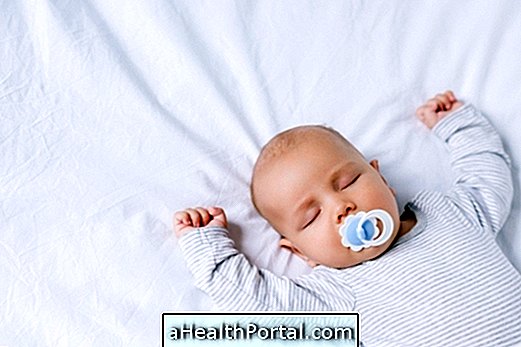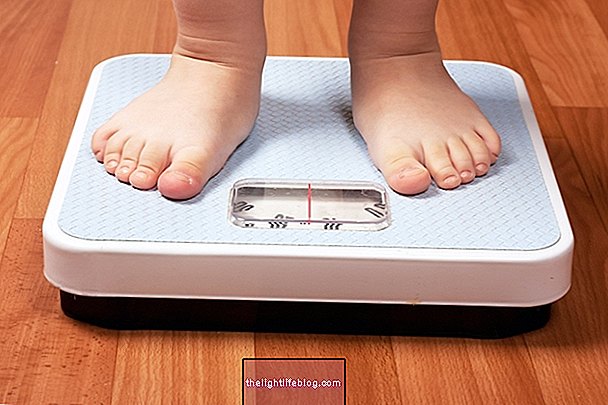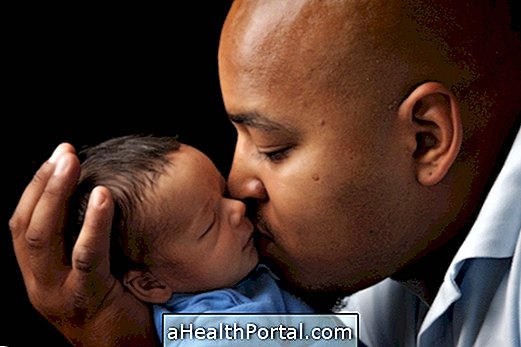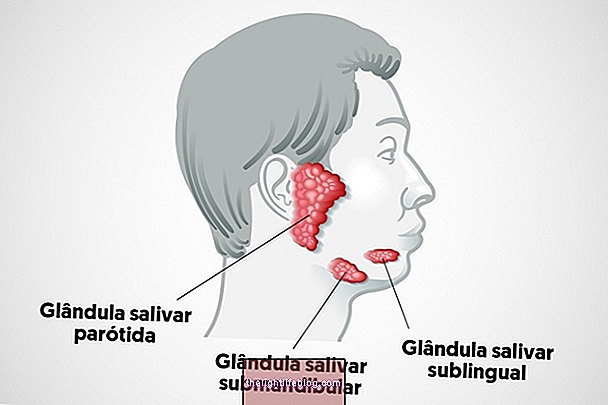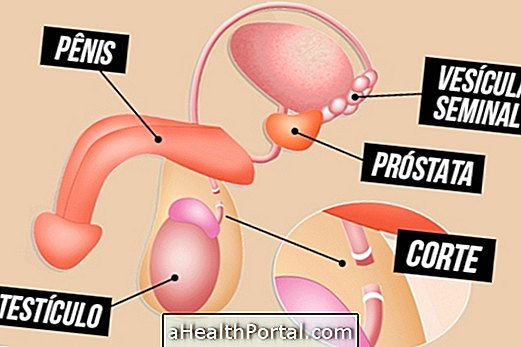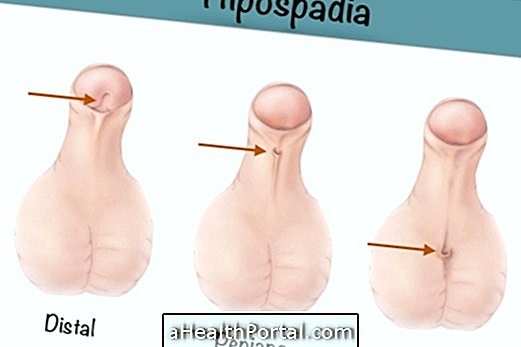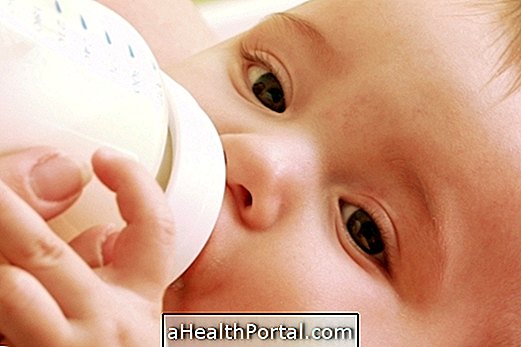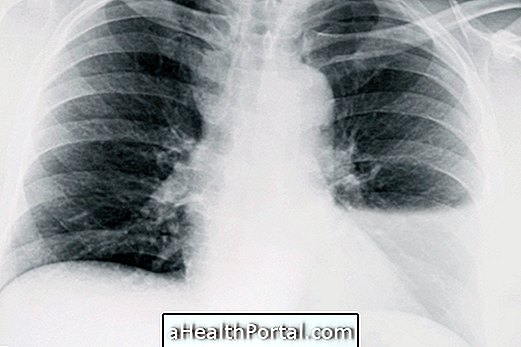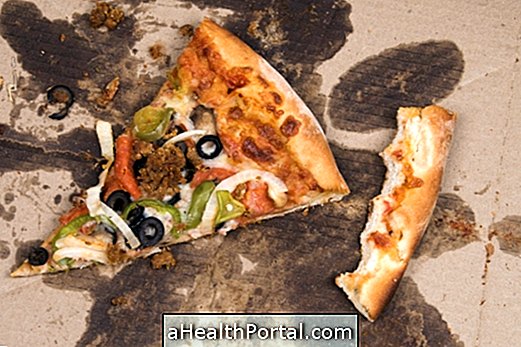The baby at 4 months smiles, mumbles and becomes more interested in people than objects, as it was until then. At this stage he begins to play with his own hands, and some when placed face down raise his head and shoulders. In addition, he begins to show some preference for certain types of toys, and laughs and squeaks when stimulated. For a baby of 4 months everything ends up being a joke, including the moments of suckling, bathing or walking.
At this stage it is common for the baby to sometimes cough, which may not be caused by illnesses like flu or cold, but by episodes of choking with saliva or with food, so it is very important that the parents be very attentive to these situations.
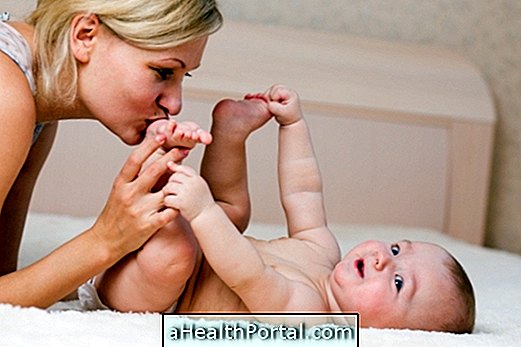
Baby weight at 4 months
The following table indicates the ideal baby's weight for this age, however, the weight may vary slightly, and the baby may have more or less weight.
| Boys | Girls | |
| Weight | 6.4 g | 6.1 g |
| Stature | 62 cm | 61 cm |
| Cephalic perimeter | 41.5 cm | 40 cm |
| Thoracic perimeter | 41.5 cm | 39.5 cm |
| Monthly weight gain | 600 g | 600 g |
In general, babies at this stage of development maintain a standard of weight gain of 600 g per month. If the weight is much higher than what we indicated here, it is possible that he is overweight and in this case should seek the pediatrician.
Sleeping baby at 4 months
The baby's sleep at 4 months at night begins to get more regular and he sleeps more hours without interruptions, being able to do an interval of up to 9 hours. However the pattern of sleep is different for each baby, there are those who sleep a lot, those who sleep naps and those who sleep little. In addition, there are babies who prefer to sleep with their mother or father, others who sleep well by themselves.
In general, the time the baby is most awake is between 15:00 and 19:00, which is the ideal time for the visits.
Development of the baby at 4 months
The 4-month-old baby plays with his fingers, can hold small objects, turns his head in any direction, and when lying on his belly down, he stands up, leaning on his elbows. When he is on his belly up he likes to look at his hands and feet, he can sit for a few seconds, when he rests and follows objects with his eyes, turning his head.
They love to be on their lap and everything for them is a joke, they also like to be undressed, stroller, hold a rattle and make noises.Usually, the baby at 4 months has a tendency to be calmer with the mother and more agitated and playful with his father.
At this age they already verbalize some sounds similar to gargarejos, can emit different sounds babbling vowels and small screams. Learn all about baby development in Baby Development with 4 months.
In addition, during this time it is important to be aware of the baby's reactions to the stimuli, since during this period it is possible to identify some problems such as hearing problems. Learn How to Identify Your Baby Does not Listen Well.
Watch the video to learn what the baby is doing at this stage and how you can help him develop faster:

Baby feeding at 4 months
Feeding the baby at 4 months should be done exclusively with breast milk whenever possible. The different types of powdered milk are also an alternative for food, and there is also the alternative of introducing cooked or raw crushed fruit, or gluten-free potatoes under the guidance of the pediatrician.
The baby already has some gastrointestinal maturity and in order to educate your taste buds, other foods can begin to be introduced according to medical indication. Learn more about baby feeding at this stage in Babies for 4 to 6 months.
How to avoid accidents at this stage
In order to avoid accidents with the baby from 4 to 6 months, parents need to adopt strategies to keep them safe, such as buying good quality toys, always with the Inmetro symbol, because this reduces the risk of suffocation and example.
See How to know if the toy is safe for your child.
Other safety measures parents should take are:
- Do not leave the baby alone on the bed or the exchanger because it can roll and fall;
- Do not leave the baby alone in the bath near a faucet because it can open the hot water and burn;
- Be aware of the paint on the crib and the walls of the house so they do not contain lead, as the baby may bite and ingest the toxic product;
- The rattles should be of good quality so that they do not break easily and the baby swallows the objects of its interior;
- Stir and knead very well before giving the baby so he does not choke;
- Wear protectors on all outlets that are within reach of the baby;
- Leave no loose wire around the house;
- Do not leave small objects within reach of the child, such as buttons, marble and bean
- Put a small gate at the top and bottom of the stairs so the baby does not go up or down alone.
To avoid sunburn in the baby, one should apply sunscreen on the baby with high factor and redouble every 2 hours, avoid sun exposure between 9am and 5pm and put on a hat.
It is important for parents to follow these measures, as they can prevent accidents such as choking, choking, burning and falls that can be serious and even fatal for the baby.

